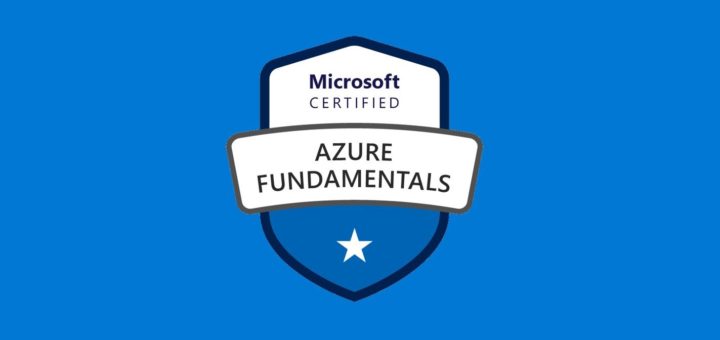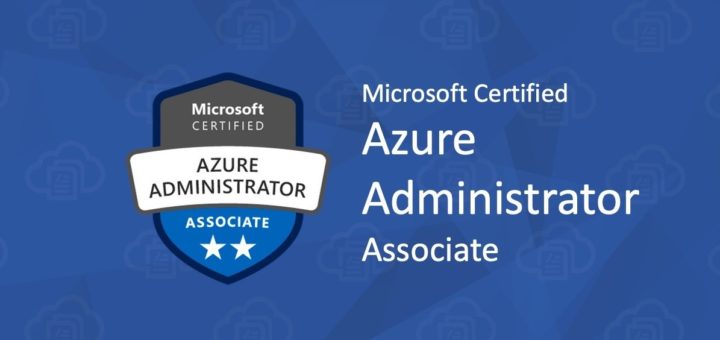Question #86
Your company has several business units.
Each business unit requires 20 different Azure resources for daily operation. All the business units require the same type of Azure resources.
You need to recommend a solution to automate the creation of the Azure resources.
What should you include in the recommendations?
- A. Azure Resource Manager templates
- B. virtual machine scale sets
- C. the Azure API Management service
- D. management groups
Correct Answer: A
You can use Azure Resource Manager templates to automate the creation of the Azure resources. Deploying resource through templates is known as
ג€˜Infrastructure as codeג€™.
To implement infrastructure as code for your Azure solutions, use Azure Resource Manager templates. The template is a JavaScript Object Notation (JSON) file that defines the infrastructure and configuration for your project. The template uses declarative syntax, which lets you state what you intend to deploy without having to write the sequence of programming commands to create it. In the template, you specify the resources to deploy and the properties for those resources.
References:
https://docs.microsoft.com/en-us/azure/azure-resource-manager/templates/overview
Question #87
DRAG DROP –
Match the Azure service to the correct definition.
Instructions: To answer, drag the appropriate Azure service from the column on the left to its description on the right. Each service may be used once, more than once, or not at all.
NOTE: Each correct selection is worth one point.
Select and Place:
Correct Answer:
Box 1:
Azure Functions provides the platform for serverless code.
Azure Functions is a serverless compute service that lets you run event-triggered code without having to explicitly provision or manage infrastructure.
Box 2:
Azure Databricks is a big analysis service for machine learning.
Azure Databricks is an Apache Spark-based analytics platform. The platform consists of several components including ג€˜MLibג€™. Mlib is a Machine Learning library consisting of common learning algorithms and utilities, including classification, regression, clustering, collaborative filtering, dimensionality reduction, as well as underlying optimization primitives.
Box 3:
Azure Application Insights detects and diagnoses anomalies in web apps.
Application Insights, a feature of Azure Monitor, is an extensible Application Performance Management (APM) service for developers and DevOps professionals.
Use it to monitor your live applications. It will automatically detect performance anomalies, and includes powerful analytics tools to help you diagnose issues and to understand what users actually do with your app.
Box 4:
Azure App Service hosts web apps.
Azure App Service is an HTTP-based service for hosting web applications, REST APIs, and mobile back ends. You can develop in your favorite language, be it
.NET, .NET Core, Java, Ruby, Node.js, PHP, or Python. Applications run and scale with ease on both Windows and Linux-based environments.
References:
https://docs.microsoft.com/en-us/azure/azure-functions/
https://docs.microsoft.com/en-us/azure/azure-databricks/what-is-azure-databricks#apache-spark-based-analytics-platform https://docs.microsoft.com/en-us/azure/azure-monitor/app/app-insights-overview https://docs.microsoft.com/en-us/azure/app-service/overview
Question #88
A team of developers at your company plans to deploy, and then remove, 50 customized virtual machines each week. Thirty of the virtual machines run Windows
Server 2016 and 20 of the virtual machines run Ubuntu Linux.
You need to recommend which Azure service will minimize the administrative effort required to deploy and remove the virtual machines.
What should you recommend?
- A. Azure Reserved Virtual Machines (VM) Instances
- B. Azure virtual machine scale sets
- C. Azure DevTest Labs
- D. Microsoft Managed Desktop
Correct Answer: C
DevTest Labs creates labs consisting of pre-configured bases or Azure Resource Manager templates.
By using DevTest Labs, you can test the latest versions of your applications by doing the following tasks:
✑ Quickly provision Windows and Linux environments by using reusable templates and artifacts.
✑ Easily integrate your deployment pipeline with DevTest Labs to provision on-demand environments.
✑ Scale up your load testing by provisioning multiple test agents and create pre-provisioned environments for training and demos.
Reference:
https://docs.microsoft.com/en-us/azure/lab-services/devtest-lab-overview
Question #89
A support engineer plans to perform several Azure management tasks by using the Azure CLI.
You install the CLI on a computer.
You need to tell the support engineer which tools to use to run the CLI.
Which two tools should you instruct the support engineer to use? Each correct answer presents a complete solution.
NOTE: Each correct selection is worth one point.
- A. Command Prompt
- B. Azure Resource Explorer
- C. Windows PowerShell
- D. Windows Defender Firewall
- E. Network and Sharing Center
Correct Answer: AC
For Windows the Azure CLI is installed via an MSI, which gives you access to the CLI through the Windows Command Prompt (CMD) or PowerShell.
References:
https://docs.microsoft.com/en-us/cli/azure/install-azure-cli-windows?view=azure-cli-latest
Question #90
Note: This question is part of a series of questions that present the same scenario. Each question in the series contains a unique solution that might meet the stated goals. Some question sets might have more than one correct solution, while others might not have a correct solution.
After you answer a question in this section, you will NOT be able to return to it. As a result, these questions will not appear in the review screen.
You have an Azure environment. You need to create a new Azure virtual machine from a tablet that runs the Android operating system.
Solution: You use PowerShell in Azure Cloud Shell.
Does this meet the goal?
- A. Yes
- B. No
Correct Answer: A
Azure Cloud Shell is a browser-based shell experience to manage and develop Azure resources.
Cloud Shell offers a browser-accessible, pre-configured shell experience for managing Azure resources without the overhead of installing, versioning, and maintaining a machine yourself.
Being browser-based, Azure Cloud Shell can be run on a browser from a tablet that runs the Android operating system.
References:
https://docs.microsoft.com/en-us/azure/cloud-shell/features






question 38, answer is B not A, these dumps are inaccurate…
Hi Jhon D,
Thanks for bringing this up, but let us highlight a few points here.
In Ques #38 Requirements are as below:
The web apps will use custom domains. [Supported by both Basic and Standard]
The web apps each require 10 GB of storage. [Supported by both Basic and Standard]
The web apps must each run in dedicated compute instances. [Basic can support only “Up to 3” and Standard can support “Up to 10“. Now in Question, It is clearly mentioned that “web apps must each run in dedicated compute instances” means one single dedicated instance is a must for 1 web app and since we have 10 web apps so we need at least 10 dedicated instances So you can’t go for Basic in this question]
Above facts can be checked at Azure official page here.
Feel free to use the comment section if we miss anything, we will try our best to provide the correct information 🙂
Thanks,
myTechMint
Simply saying that dumps are inaccurate without knowing the actual facts is not a good idea, @myTechMint explained so patiently and correctly. Thanks for providing these dumps for free, helped me to crack my exam easily without paying a cent.